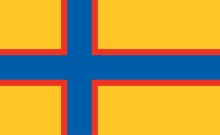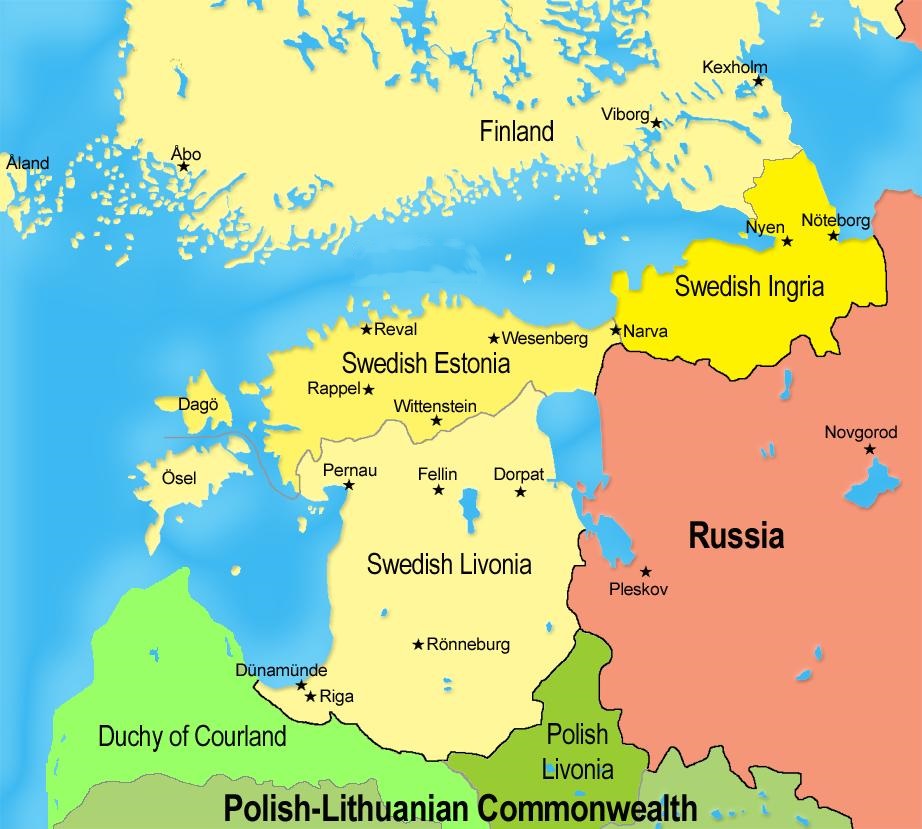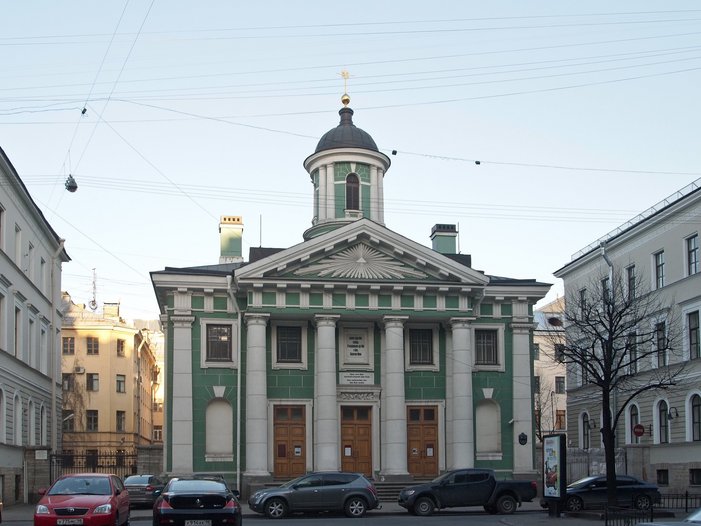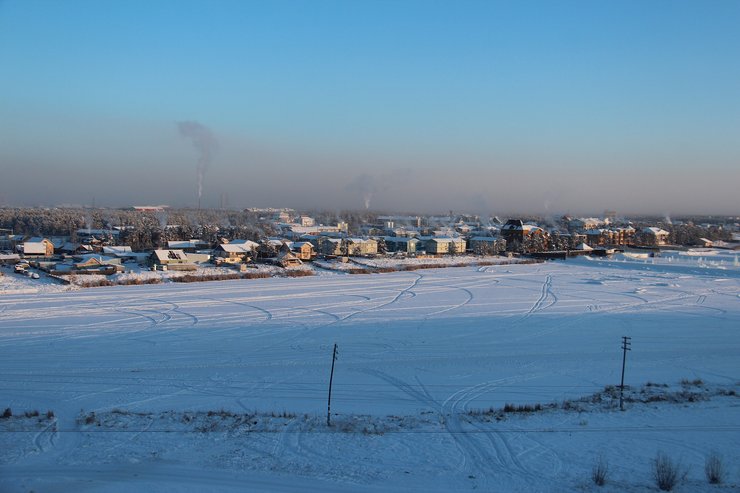Ingria and the Ingrian Finns
Ingria is the historic name for the isthmus between the Baltic Sea and Lake Ladoga, connecting modern-day Finland with modern-day Estonia. Today, this region is dominated by the city of St Petersburg. Over the last four hundred years, Ingria has seen numerous invasions, annexations and changes to state boundaries, reflecting the major historical events of early modern Northern Europe. Ingria can be characterised as a region of political and ideological borders – at various times, constructed as the dividing line between Finland and Russia, capitalism and communism, East and West. These changes have had profound impacts on the Ingrian Finns, the seventeenth century Finnish-speaking settlers in the region and their descendants.

The early history of Ingria and the Ingrian Finns
Medieval Ingria was a marshy, sparsely populated outpost of the Novgorod Republic, and later the Tsardom of Russia. The exact etymology of the name ‘Ingria’ is unclear – one proposal links it to Grand Princess Ingegerd, wife of Yaroslav I of Kiev and Novgorod. Ingegard may have received the lands around Lake Ladoga as a wedding present in 1019. Medieval Ingria’s primary inhabitants were Izhorians and Votes, who spoke Finno-Ugric languages and fished the waters of the Neva delta. During this time, Ingria was the scene of several invasions by foreign powers – perhaps most famously, Prince Alexander Nevsky repelled an invasion by Sweden at the Battle of the Neva in 1240. A later invasion by Sweden in the early seventeenth century (during Russia’s “time of troubles”, when leadership was unclear) was more successful, and Ingria fell to Sweden in 1617 under the Treaty of Stolbovo.

PICTURE: Ingria as a dominion of Sweden in the seventeenth century. Photo: Thomas Blomberg, Creative Commons Attribution Licence
The Treaty of Stolbovo was an important moment in the rise of Sweden as the dominant power in the Baltic Sea. This period is known in Sweden as the Stormaktstid or “great power era”. Under Swedish control, Ingria was settled by Finnish-speaking, Lutheran-practicing peasants from the eastern parts of the Swedish Kingdom, and a community of Ingrian Finns was established. Sweden’s control over Ingria lasted less than a century; by the early 1700s, Peter the Great had reclaimed the territory in the Great Northern War (1700-1721), and the balance of power in the Baltic had shifted to Russia. A significant Finnish-speaking community continued to live in Ingria, and Finns remained the second-largest ethnic group in the St Petersburg region (after Russians) until the 1920s. St Petersburg hosted a Finnish Lutheran Church and Finnish language school. From 1812 onwards, Ingrian Finns also had easy access to the neighbouring Russian-controlled Grand Duchy of Finland, although as residents of Russia they were not governed or protected by the semi-autonomous Grand Duchy.

PICTURE: St Mary’s Lutheran Church in St Petersburg, a focal point for the city's Finnish-speaking community in the eighteenth and nineteenth centuries. Photo: Andrew Zorin, Creative Commons Attribution Licence
Twentieth century Ingria, and the suppression of the Ingrian Finns
In the early twentieth century, civil war in both Russia and Finland had a profound impact on the Finnish-speaking community in Ingria, which at the time numbered around 130,000. An Ingrian Finnish breakaway movement formed in 1919, seeking to establish an independent Northern Ingrian republic and ultimately join the newly independent Finland. Finnish nationalists formed the North Ingria Free Corps and entered Ingria in 1919-1920, aiming to “rescue” Ingrian Finns from Soviet control. This expedition was part of a broader phenomenon known as the Heimosodat or “kinship wars” in which Finnish nationalist paramilitaries intervened to support uprisings against the Bolshevik government in regions of the Soviet Union with significant populations that spoke Finnish or related Finno-Ugric languages.
In Finnish political discourse, particularly following the victory of the conservative Whites in the Finnish Civil War of 1918, the Soviet Union came to be seen as the enemy of Finnish identity and culture. The Finnish government took on the role of protector for the Finnish-speaking minority in the Soviet Union. Ultimately, the Heimosodat did not result in any independent Ingrian political entity, or any territorial gains for Finland in Ingria. However, the 1920 Treaty of Tartu, signed by the Finnish and Soviet governments, included a clause guaranteeing the rights of the Soviet Union’s Finnish-speaking minority.
Second World War: a dramatic shift for Ingrian Finns
The Second World War marked a dramatic shift in the status of Ingrian Finns in the Soviet Union. Finland and the Soviet Union were at war from 1939-1940 (the Winter War) and 1941-1944 (the Continuation War). In 1941, German troops invaded Ingria and encircled the city of St Petersburg, then known as Leningrad. The Nazi government in Berlin entered into talks with Helsinki to evacuate Ingrian Finns to Finland, and these evacuations took place in 1943 and early 1944. Around 60,000 Ingrian Finns left the Soviet Union for Finland during this period, but for most, their time in Finland was brief.
In September 1944, the Continuation War ended in defeat for Finland. The war armistice, signed in Moscow, granted the Soviets new territory in Finnish Karelia, Salla and Petsamo. Finland was able to evacuate its citizens from the ceded territory, but was also required to return all Soviet citizens who had fled the war to Finland – including the Ingrian Finns. To Stalin’s government, the Ingrian Finns were traitors. They were deported from Ingria, sent to eastern Karelia, central Russia (particularly the Ural Mountains region), Siberia and Kazakhstan, under the pretext that they were loyal to Finland and thus a security threat for Moscow if allowed to reside near the Finnish border. Finnish language, the Lutheran faith, and expressions of an Ingrian Finnish identity were subject to direct and indirect suppression from Soviet authorities.

PICTURE: Siberia in winter. To Stalin’s government, the Ingrian Finns were traitors. They were deported from Ingria, sent to eastern Karelia, central Russia, Siberia and Kazakhstan, under the pretext that they were loyal to Finland and thus a security threat for Moscow if allowed to reside near the Finnish border. Photo: Benjamin Epp, Pixabay. Public domain.
The fall of the Soviet Union and the ‘return’ of the Ingrian Finns
At the end of the twentieth century, the ‘Iron Curtain’ as a strong political border between communist East and capitalist West began to recede. The Berlin Wall fell in November 1989, and the Soviet Union under Mikhail Gorbachev engaged more openly with the West. In 1990, Finnish President Mauno Koivisto announced that Finland would offer residence permits to Soviet citizens of Finnish descent, allowing the Ingrian Finns to ‘return’ to Finland. Initially, this policy enjoyed broad political support in Finland. It was seen as righting an historic wrong (the deportation of Ingrian Finnish refugees after the Second World War), and perhaps also a return to Finland’s role as the protector of the Finnish-speaking minority in the Soviet Union.
During the 1990s and 2000s, around 30,000 Ingrian Finns migrated to Finland. However, over this period, the right to return policy for Ingrian Finns was subject to legal revisions and changing political views. This resulted in a sequential tightening of the policy until the decision was ultimately taken in 2010 to end it. The last permits for Ingrian Finns were issued in 2016 to those who had applied for returnee status on or before 1 July 2011. The changing views of the right to return policy were informed, in part, by Finland’s broader political context – a recession hit Finland in late 1990, unemployment rose, and it was no longer politically prudent to permit a large?scale influx of migrants.
What does it mean to be 'Finnish'?
The changing views towards Ingrian Finns were also the result of what Finnish policymakers understood to be the constituent elements of Finnish identity. For instance, many policymakers expected the Ingrian Finns to speak Finnish, and have a unique connection to Finland as the only country with Finnish as an official language. In practice, however, many Ingrian Finns no longer spoke fluent Finnish as they had been raised as Russian speakers in the Soviet Union. Conservative parties in Finland, who had previously supported the right to return policy, began to question the 'Finnishness' of Ingrians – as Russian speakers, could they really be classified as Finns? Thus, in 2003, the Finnish government introduced language tests for Ingrian Finns seeking residence permits. The required level was fairly basic (applicants needed to prove only A2 competence in the European Common Framework language proficiency rating scale), and this was probably intended as a demonstration of an initiative to ‘regain’ a lost Finnish identity. In practice, however, this requirement could be used to exclude those of Ingrian Finnish descent who did not show sufficient commitment to what Finnish policymakers saw as a Finnish identity.

PICTURE: Finnish President Mauno Koivisto in 1988. In 1990, President Koivisto announced that Finland would offer residence permits to Soviet citizens of Finnish descent, allowing the Ingrian Finns to ‘return’ to Finland. Photo: Wikipedia Commons, Public domain.
The Ingrian Finns themselves have often promoted a more complex, less binary view of their identity than the ‘Finnish/Not Finnish’ distinction apparent in the right to return policy. A 1994 study undertaken by Pirjo Takalo for Finland’s Ministry of Health and Social Services found that Ingrian Finns often took a multifaceted approach to identity, and viewed themselves as positively linked to both Finland and Russia. In some cases, Ingrian Finns identified more with Ingria as a region, rather than Finland or Russia as political states. Ingrian Finns occasionally used the term ‘return’ to refer to resettlement in the Ingrian region following the Stalin-era deportations, rather than migration to Finland.
Ultimately, the gradual restriction and final end of the Ingrian Finns’ migration to Finland showed an interesting element of consistency in how Finnish political leaders viewed and ascribed Finnish identity. Finnish policy on return migration suggested that
- Finland has a special responsibility to protect those with a Finnish identity in the Soviet Union or Russia;
- Finnish and Russian identities are mutually exclusive, and often in opposition; and
- the Finnish language is crucial to ascribing a Finnish identity to those outside of Finland.
For Finland’s policymakers, there was no real re-examination of how Finnishness could be constructed as an identity. Changes to the policy reflected policymakers’ changing perceptions of how Finnish the Ingrian Finns really were. Ingrian Finns came to be seen as less Finnish, and more Russian, and thus became increasingly excluded from a policy that was predicated on Finnishness.
Further reading:
- Anssi Paasi. Territories, Boundaries and Consciousness: The Changing Geographies of the Finnish-Russian Border (Chichester: John Wiley and Sons, 1996)
- Markku Teinonen and Timo Juhani Virtanen, eds., Ingrians and Neighbours: Focus on the Eastern Baltic Sea Region (Helsinki: Finnish Literature Society, 1999)
- Pekka Nevalainen and Hannes Sihvo, eds., Inkeri, Historia, Kansa, Kulttuuri (Helsinki: Suomalaisen Kirjallisuuden Seura, 1992)
- Pirjo Takalo, Inkerinsuomalaiset Paluumuuttajina: Selvitys inkerinsuomalaisten integraatiosta ja viranomaispalvelujen käytöstä [Ingrian Finns as Return Migrants: A Report on Ingrian Finns’ Integration and Use of Government Services] (Helsinki: Sosiaali- ja terveysministeriö, 1994)